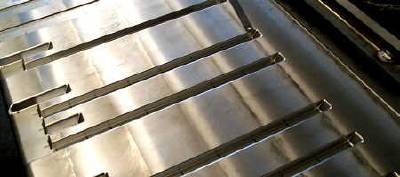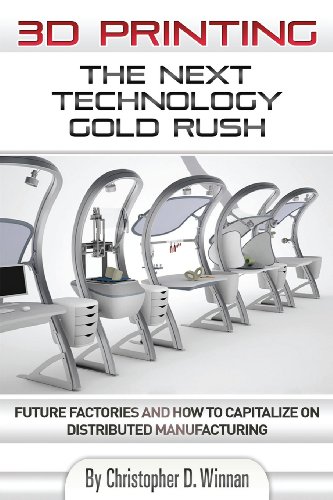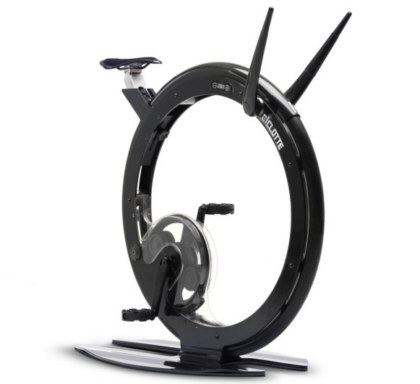 Thermoforming and foaming mold maker Pentha S.r.l uses a combination of various CAD design tools and CAM production software, with its human expertise and that of its close industrial neighbors. The result is a compact yet prosperous business with a specialist niche and an international market.
Thermoforming and foaming mold maker Pentha S.r.l uses a combination of various CAD design tools and CAM production software, with its human expertise and that of its close industrial neighbors. The result is a compact yet prosperous business with a specialist niche and an international market.
A thermoforming mould is a negative image of the finished product that it produces. Such moulds are used to shape plastic sheet into such end products as interior liner shells for refrigerators. In the molding process the plastic sheet, mould and molding environment is heated to a temperature that softens the plastic and allows it to be shaped to the contours of the mould. The environment and mould is then cooled to stabilize the shaped plastic shell and allow become rigid again. It is then removed and the process started over again.
Moulds are made to an accuracy of 0.1mm and incorporate small variations to accommodate dimensional change that result from shrinkage and internal stress buildup that occur in the final product as it cools or cures. Products are all but complete when they come off the mould save for piercing and trimming. The mould must be finished to the same high standard required of the final product. And the mould and all its components must be robust enough to survive the entire manufacturing life of the particular model it was built for.
 Sounds simple, but as with practically every engineering process, the closer you look, the more complex the problems become and the more ingenious the solutions found to solve them. The knowledge and experience of the people at Pentha is apparent in the work that they produce and the high regard that the company holds within manufacturing industry.
Sounds simple, but as with practically every engineering process, the closer you look, the more complex the problems become and the more ingenious the solutions found to solve them. The knowledge and experience of the people at Pentha is apparent in the work that they produce and the high regard that the company holds within manufacturing industry.
Moulds are made from aluminium cast into the rough shape of the mould. Pipes are cast into the mould at this point to provide temperature control during molding. As the mould is being used in production it will undergo a process of heating and cooling for each product that it produces. The casting is then machined to size and shape with Pentha’s own CNC milling machines. The machines use data supplied from the Pentha design office above.
First stages of machining the cast aluminium mold. The first cuts are made as the CNC mill begins to machine the cast aluminium mold.
When the mould is designed to customer specifications, dimensional allowances are factored in and the design modified by Pentha’s experienced design engineers to enable the mould to produce the highest quality of end product with the greatest efficiency. Factors to take into account include the curvature and number of bends in any particular region and the effect on formability and wall thickness.
Probably the most complex parts of these moulds are the retractable components for undercuts. Retractable components are mould surfaces that can be withdrawn inside the mould when it is time to release the shell from the mould. Shelf ledges and other such protrusions and depressions in the finished shell would prevent the molding from coming off if the surfaces that formed them were unable to retract.
 The retractable surfaces are generally made in brass and retract by a complex system of control arms operated by pneumatics. Retraction mechanisms must also maintain the same high degree of accuracy and reliability as the static parts of the mould for the lifetime of the model.
The retractable surfaces are generally made in brass and retract by a complex system of control arms operated by pneumatics. Retraction mechanisms must also maintain the same high degree of accuracy and reliability as the static parts of the mould for the lifetime of the model.
The retraction mechanism fitted inside the aluminium mold. The retraction mechanism fitted inside the aluminium mold.
A typical refrigerator interior mould requires around 80-90 drawings to document. Pentha is usually supplied with information from appliance manufactures in IGES format. In the design center Pentha use both CADKEY and CATIA software. The CAD tools are used individually and in combination depending on the nature of the data supplied by the client, the type of design work to be done and the other contractors that data is to be shared with. Pentha design staff maintain contact with CAD/CAM support services such as Unocad which gives them an additional source of knowledge and expertise on demand.
The CAM center uses machining Strategist to drive the two large bed CNC mills that machine all the moulds. As with CAD software the discussion of machining software always seems to polarize opinion and lead to some biased remarks. Pentha is very pleased with the recent move to Machining Strategist which replaced another well-known CAM package. Satisfaction stems mainly from the faster machining now possible and the better final finish. Machining Strategist has a reputation for its ability to manage high cutter feed rates and produce better final finishes with fewer cuts and tool changes.
 While all mould machining is conducted in Pentha’s workshop, machining and fabrication of ferrous components is contracted out. The light industrial community around Pentha’s base in Schio (in the Veneto region of north eastern Italy) is home to many small companies that can take CAD data and produce quality components on time and at reasonable cost.
While all mould machining is conducted in Pentha’s workshop, machining and fabrication of ferrous components is contracted out. The light industrial community around Pentha’s base in Schio (in the Veneto region of north eastern Italy) is home to many small companies that can take CAD data and produce quality components on time and at reasonable cost.
Final assembly and finishing of moulds is also done in the Pentha factory. All moulds are hand-finished to a very high standard. Internal bends on the mould surface are drilled though with 1mm holes to enable a vacuum to be applied in these tight corners from inside the mould during the molding process.
Fine vacuum holes are strategically placed to allow the soft plastic to be pulled into indentations during molding.The vacuum ensures that the soft plastic is pulled right into the mould detail for a perfect result. These holes are carefully drilled by hand, making sure not to hit any of the cast-in temperature control plumbing. An error at this stage could easily lay waste to a $60,000 mould.
 Finally the moulds are packed up and dispatched to production factories across the world. I was surprised to learn that 10 moulds had been sent to Australian refrigerator manufacturer just before CADinfo.NET visited Pentha. The company produces in the order of 300 moulds per year.
Finally the moulds are packed up and dispatched to production factories across the world. I was surprised to learn that 10 moulds had been sent to Australian refrigerator manufacturer just before CADinfo.NET visited Pentha. The company produces in the order of 300 moulds per year.
The use of technology at Pentha is an interesting mix of a limited selection of quality software tools, used interchangeably depending on need. The well-chosen software toolset is kept to a minimum and kept up to date to ensure that design and production people and equipment can work to optimum efficiency. It is obvious that the people within the company are valued and important to the business and there is no sign of their skills and expertise being replaced or even diminished by the technology employed. Pentha simply uses technology to facilitate higher production volume and retain high quality in the finished product.








